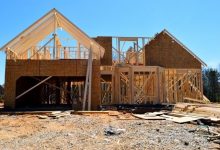A new report from the Property Council of Australia and the Green Building Council of Australia has laid out a set of policy recommendations to get Australia’s buildings net-zero ready, and save households money in the process.
According to the report, buildings account for half of Australia’s electricity use and almost a quarter of its emissions.
Launched at an event in Sydney today, Every Building Counts outlines eight key policy recommendations to reduce the sector’s gargantuan carbon footprint.
- Set out a long-term strategy for zero-carbon-ready buildings
- Require all new residential and commercial buildings to operate on high-quality electric equipment in the National Construction Code 2025
- Accelerate the shift to high performance buildings with targeted incentives
- Accelerate the trajectory towards resilient, all-electric, zero-carbon buildings in the building code
- Embed the ‘energy efficiency first’ principle in the National Electricity Objective
- Commit zero-carbon-ready for all new and existing government owned and leased buildings by 2030
- Expand Australia’s national building rating system (NABERS) to cover all building types and extend the CBD program, as well as introducing a single national rating for home energy performance
- Adopt a credible national framework for measuring embodied carbon.
Zero-carbon ready buildings, according to the report, are those that are both highly energy efficient and either source their energy from renewables directly, or use and energy supply that will be fully decarbonised by 2050.
The report finds that energy efficiency measures could deliver 64 MT of avoided CO2 equivalent emissions by 2050, and $20 billion in energy bill savings for businesses and households.
Fully electrifying the built environment, meanwhile, could avoid 199 MT of CO2 equivalent emissions by the same date, and save the economy $49 billion compared with business-as-usual.
“The Australian property sector are global leaders in sustainability, which means we are incredibly well positioned to deliver high-impact and yet cost-effective ways to help achieve the nation’s net zero goals,” said Property Council Chief Executive Mike Zorbas.
“All we need is the right policy settings to guide that effort. Smart policies should be front and centre for decision-makers seeking to reduce Australia’s emissions.”
The report also calls for the creation of a national rating scheme for the energy performance of homes, similar to the scheme for white goods and electronic appliances.
Green Building Council of Australia CEO Davina Rooney said a coordinated rating scheme would allow buyers and renters to compare homes on the market, and bring Australia up to speed with other countries implementing similar policies.
“Locally, we’re living with the impacts of climate change and a cost-of-living crisis, while healthy, affordable, energy efficient homes are increasingly out of reach for everyday Australians,” she said.
“Globally, we’re being called to ‘do everything, everywhere, all at once’ to reduce carbon emissions,” said Rooney. “Australia has the tools, the experts, and the guidance to meet this call and ready our buildings and homes for the future.”
“While most of us will have seen energy ratings stuck on the front of a fridge, washing machine or dryer there is currently no national rating scheme for what is usually a person’s greatest life purchase – their home,” Zorbas added.
“It’s high time Australian home buyers and renters had access to a consistent national rating, so they’re aware of the cost of energy bills they’re set to face and comfort levels they can expect during colder months.”
The report also recommends a greater focus on cultivating the local skills to deliver cutting-edge, zero-carbon buildings.
“Transitioning 85 percent of homes off gas by 2040 requires retrofitting hot water systems in 5,000 homes every week until 2040, starting now. Much of Australia’s building sector is not equipped or trained for this task, but it doesn’t have to be that way,” said Rooney.
“We have a unique opportunity to boost the capacity and know-how of our already skilled workforce, making the transition to low carbon, resilient buildings within reach and possible, sooner rather than later.”










